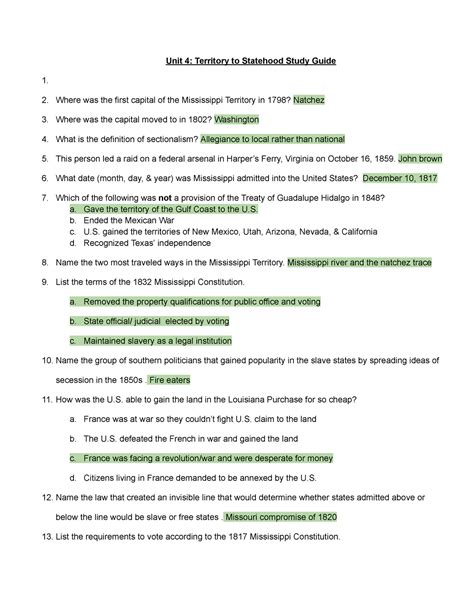Introduction

Prepare to excel in Unit 4 by delving into this comprehensive study guide that covers key concepts, practice questions, and tips for success.
Key Concepts
Electromagnetic Waves:
- Definition: Oscillating electric and magnetic fields propagated through space
- Examples: Radio waves, microwaves, infrared, visible light, ultraviolet, X-rays, gamma rays
Wave Characteristics:
- Frequency: Number of oscillations per second (Hertz, Hz)
- Wavelength: Distance between two consecutive crests or troughs (meters, m)
- Speed: Velocity of wave propagation (meters per second, m/s)
Electric Circuits:
- Components: Resistors, capacitors, inductors, diodes, transistors
- Ohm’s Law: Resistance (Ω) = Voltage (V) / Current (A)
- Kirchhoff’s Laws: Conservation of current and voltage
Digital Logic:
- Binary system: 0 and 1 representing values
- Logic gates: AND, OR, NOT, XOR, etc. (see Table 1 below)
Table 1: Common Logic Gates
| Gate | Symbol | Truth Table |
|---|---|---|
| AND | ∧ | 0 if either input is 0, 1 otherwise |
| OR | ∨ | 1 if either input is 1, 0 otherwise |
| NOT | ¬ | 0 if input is 1, 1 if input is 0 |
| XOR | ⊕ | 1 if inputs are different, 0 if inputs are the same |
Applications:
- Smartphones: Wireless communication, display, charging
- Electric motors: Convert electrical energy to mechanical energy
- Medical imaging: X-rays, MRI, CT scans
Practice Questions
Electromagnetic Waves:
- What is the frequency of a wave with a wavelength of 0.1 meters and a speed of 300,000,000 meters per second?
- Name the three types of electromagnetic waves with the longest wavelengths.
Electric Circuits:
- Calculate the current flowing through a resistor with a resistance of 10 ohms and a voltage of 5 volts.
- What is the purpose of a capacitor in an AC circuit?
Digital Logic:
- Simplify the following Boolean expression: (A ∧ B) ∨ (¬A ∧ B)
- Design a logic circuit that implements the following function: Output = 1 if both inputs are 0 or 1 if either input is 1.
Tips for Success
- Attend lectures regularly: Enhance your understanding and clarify concepts.
- Review notes and textbooks: Reinforce concepts and deepen your knowledge.
- Practice problems: Improve problem-solving skills and build confidence.
- Seek help from tutors or classmates: Clarify doubts and strengthen comprehension.
- Utilize online resources: Access tutorials, simulations, and practice quizzes.
Imaginative Applications
Electromagnetic Synthesis: Create new materials or structures by manipulating the properties of electromagnetic waves.
Cognitive Interfaces: Develop devices that interact with the human brain using electromagnetic signals.
Ultrasound Sensing: Enhance medical diagnostics and robotic navigation using advanced ultrasound technology.
Smart Energy Grids: Optimize energy distribution and reduce consumption through electromagnetic monitoring techniques.
FAQs
-
What is the difference between AC and DC circuits?
– DC circuits involve only direct, constant current, while AC circuits involve alternating current that reverses direction periodically. -
What is the purpose of a diode?
– A diode allows current to flow in one direction only, preventing reverse current flow. -
What is the role of transistors in digital logic?
– Transistors act as switches or amplifiers, forming the building blocks of digital circuits. -
How are electromagnetic waves used in communication?
– Electromagnetic waves carry modulated signals that transmit information over distances. -
What is the significance of Ohm’s Law?
– Ohm’s Law defines the relationship between voltage, current, and resistance in electric circuits, a fundamental principle for circuit analysis. -
What is the advantage of using Boolean logic?
– Boolean logic allows complex logical operations to be represented simply using binary variables, facilitating digital circuit design.
Conclusion
Mastering Unit 4 requires a comprehensive understanding of electromagnetic waves, electric circuits, and digital logic. By embracing the key concepts, practicing problems, and implementing effective study strategies, you can excel in the field and unlock new possibilities in engineering and technology.
